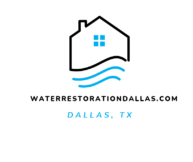Fire can be a devastating event, leaving behind a trail of destruction and disrupting lives. In the aftermath of a fire, the focus shifts from fire suppression to fire damage restoration. This process involves a comprehensive approach to assess, stabilize, and restore damaged properties, ensuring the safety and well-being of occupants.
The Stages of Fire Damage Restoration
Fire damage restoration is a complex process that typically involves several stages:
1. Emergency Response and Safety:
The immediate priority after a fire is to ensure the safety of the property and occupants. This may involve boarding up windows and doors, securing utilities, and preventing unauthorized access.
2. Damage Assessment:
Once the property is deemed safe, a thorough assessment of the damage is conducted. This involves evaluating the extent of structural damage, identifying fire-damaged materials, and assessing the presence of smoke and soot contamination.
3. Debris Removal and Demolition:
Unusable materials, such as burned debris, damaged structural components, and contaminated items, are removed from the property. This may involve demolition of severely damaged areas.
4. Water Damage Mitigation:
Firefighting efforts often involve the use of water, which can lead to water damage in addition to fire damage. Water extraction and drying techniques are employed to prevent further damage and mold growth.
5. Soot and Smoke Removal:
Soot and smoke can cause extensive damage to surfaces and pose health risks. Specialized cleaning techniques are used to remove soot and smoke residues from walls, ceilings, furniture, and other affected areas.
6. Structural Repairs:
Structural damage is repaired to restore the integrity of the building. This may involve replacing damaged framing, flooring, roofing, and other structural components.
7. Contents Cleaning and Restoration:
Personal belongings and fixtures are cleaned and restored to the extent possible. This may involve professional cleaning, deodorization, and repair of damaged items.
8. Odor Control:
Lingering smoke and fire odors can be unpleasant and persistent. Ozone generators, odor-absorbing materials, and specialized cleaning techniques are used to eliminate unpleasant odors.
9. Restoration of Electrical, Plumbing, and HVAC Systems:
Damaged electrical, plumbing, and HVAC systems are repaired or replaced to ensure the safe and functional operation of the property.
10. Final Inspection and Certification:
Once the restoration work is complete, a final inspection is conducted to ensure that the property meets safety standards and is habitable. Certifications may be required to demonstrate compliance with building codes and insurance regulations.
Engaging Professional Fire Damage Restoration Services
The fire damage restoration process can be complex and challenging, requiring specialized expertise and equipment. Engaging professional fire damage restoration services offers several benefits:
- Expertise and Experience: Professional restoration companies possess the knowledge and experience to effectively assess, stabilize, and restore fire-damaged properties.
- Safety and Compliance: They ensure that restoration work adheres to safety regulations and building codes, minimizing risks to occupants and property.
- Efficient and Cost-Effective Solutions: They have the resources and equipment to complete restoration work efficiently, minimizing downtime and associated costs.
- Insurance Claim Assistance: They can work closely with insurance companies to document damage, prepare claims, and facilitate the insurance claim process.
Conclusion
Fire damage restoration is a crucial step in the recovery process following a fire, ensuring the safety and habitability of affected properties. By understanding the stages involved and the benefits of professional restoration services, property owners and occupants can take informed decisions towards restoring their homes or businesses.
2. Common Causes of Water Damage in Dallas & Prevention Tips
3. Importance of quick water damage response
4. Mold remediation in Dallas TX
5. How to choose a water damage restoration company in Dallas TX
6. How to navigate insurance claims for water damage
7. How to protect your home from water damage
8. What is the fire damage restoration process
9. What are the challenges faced during water damage restoration
10. How to choose right fire damage restoration company in Dallas
